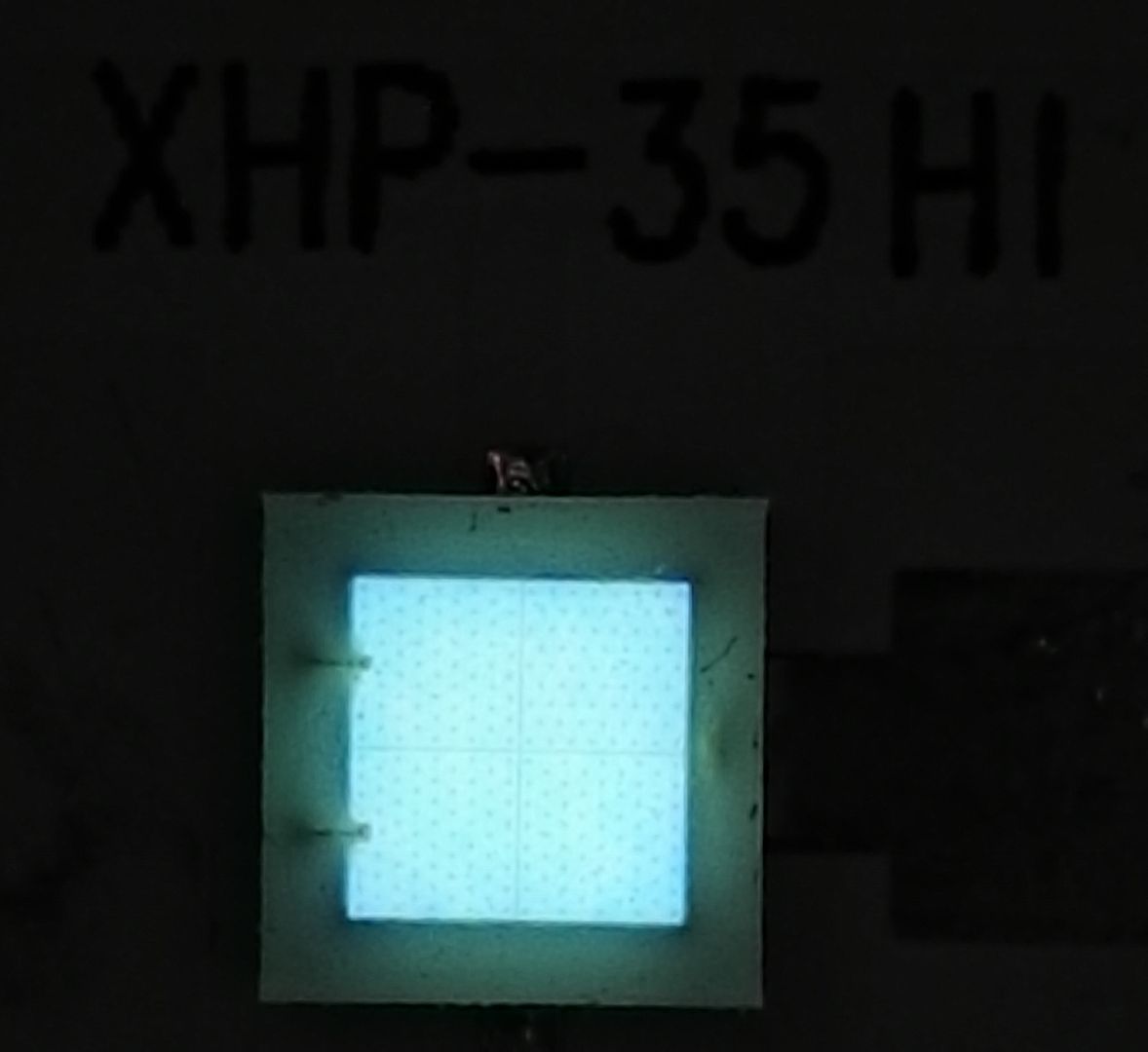I was pretty excited when I realized the XHP35 existed, and then saw NO die gaps—got a bit anxious. I did see the cross pattern there when I viewed the data sheet, I figured there may be a small gap (cross) under the phosphor layers, but it looks better than that even, at least when viewing Pilotdog’s photo above. CREE really did crunch them together practically as 1-die, as I do not see any true gaps at all. I’ll confess, it does not meet my idea of a standard “monolithic” chip, and there’s no denying that I see 4 separate die cuts. I stand corrected to say that it isn’t 4-dies. :zipper_mouth_face: In performance however, I would expect it to perform like a monolithic die—at least close. Due to the way light scatters through the phosphor, it should help blur away the evidence of multiple chips when it is powered up. The scattering of rays will help pump the central chip phosphor area.
For the devil’s advocate that I am at times, I must wonder about some of the complaints surrounding this LED in 12V… :evil:
When some of you state that we do not have 3S hosts available, or very many of them at least, what leads you to believe you must now use an XHP35 to begin with? As I watch new projects built, I get the feeling some modders aren’t designing lights to be optimal in their configuration, but rather to mainly say, “I have this new LED installed in it”, just because the LED is going to be rare in new builds. 0:)
OK, fine with me. If for example that a new 20V LED is released by CREE though, we do not typically get upset 20V flashlights aren’t there—we more often do not use that LED choice in a flashlight.  That’s the angle I have on the XHP35, really. For what I see being built, it isn’t drastically appealing I would not believe in most situations. The reason I am excited about the XHP35 release, is because I have long desired a “flat” or rather 2D die from Cree larger than the XM-L2, but lacking openly separated dies, specifically for use in large aspheric hosts. When I say large hosts, I mean 75mm lens or bigger, to compensate for the larger total die area.
That’s the angle I have on the XHP35, really. For what I see being built, it isn’t drastically appealing I would not believe in most situations. The reason I am excited about the XHP35 release, is because I have long desired a “flat” or rather 2D die from Cree larger than the XM-L2, but lacking openly separated dies, specifically for use in large aspheric hosts. When I say large hosts, I mean 75mm lens or bigger, to compensate for the larger total die area.
About the other hosts…
Any single 32650 host is capable of being setup with 3x14500 cells, and depending on design—quite possibly 3x14650 cells with correct arrangement. Sure, that’s like a 2200-2500mAH 3.7V single-cell equivalent, but it’s the bottom-end cell configuration choice for short 3S hosts to be had that are not overly long. 3 small cells will also charge much faster than one big cell, assuming a 3 to 4-cell charger is used.
If you needed lightweight 3S power, my next thoughts would be looking for the 3x16340 (3xCR123) hosts with possible tube extension for 18650s, such as some recent Olights (M3XS-UT, for example). Lights like these will handle 3x18350 cells and remain lightweight.
One could use a 3x18650 side-by-side host, and set the cells up in series instead of parallel if they aren’t series already. Then there are the side-by-side 2x18650 hosts, change for 4x16340 or possibly even 4x18350. Lastly what I think of are the 9xAA/14500 hosts. I have some of these that have an excellent overall size IMO, and they are run as 3S3P—great combo if you do not mind charging up the 9x14500s when needed.
Other than this, I can see where some do not enjoy the 3 or 4 x18650/26650 “telephone-pole handle” lights as hosts. Very long and out of proportion for my tastes usually. The reason I appreciate the TR-J20 host design so much, is the massive cooling ability first off, but it’s so beefed up with excess metal, that 3x32650 stacked in the tube doesn’t look out of proportion, and the capacity is certainly there.



